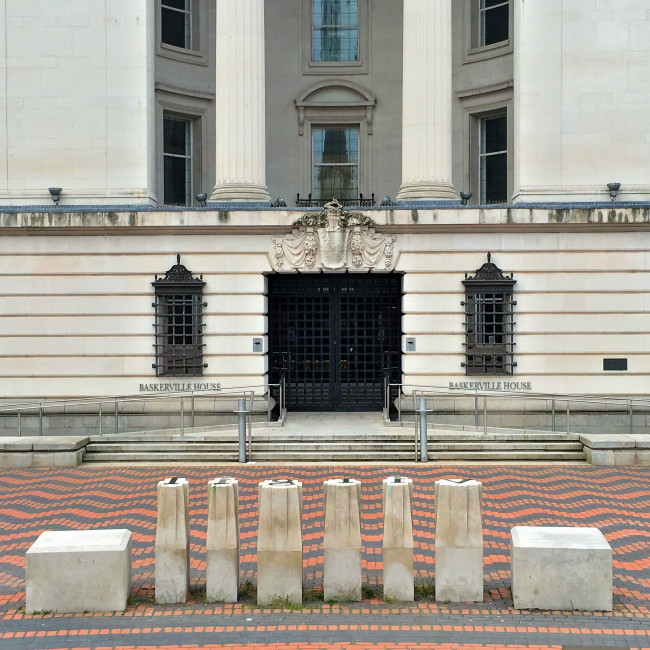Friday Photo: Baskerville House

Today’s Friday photo is the grade II listed Baskerville House in Birmingham City Centre. Named for John Baskerville, It was built on the site of ‘Easy Hill’ his former estate. Baskerville was a renowned printer and though to be a sometime member/collaborator of the prestigious Lunar Society, he designed the ‘Baskerville’ serif typeface in 1757, creating a crispness by increasing the contrast between the thick and thin strokes. Originally from Wolverley, near Kidderminster, Baskerville moved to Birmingham in 1726. He worked as an engraver and set up a japanning business before he began his innovative and influential work as a printer and type founder. Baskerville died in 1775 and was buried in his garden at Easy Hill. The house was burnt during the Birmingham Priestley Riots and in 1820 His body was disinterred during the building of a canal through the grounds, while the rest of the property was converted to wharf land. He was reburied in 1829 at Christ Church, though that too was to be demolished. Baskerville’s final resting place became the Warstone Lane Cemetery in the Jewellery Quarter where he has resided since 1898.
The city council bought the land, on which the building stands, in 1919 to create a new Civic Centre. Architect Thomas Cecil Howitt designed the building which would become Baskerville House and also the Municipal bank on the opposite side of Broad street. You can see in front of the building a sculpture by artist David Patten. The reversed lettering on the columns spells Virgil (in Baskerville typeface of course!); the Roman poet who’s work John Baskerville printed.



I worked at Baskerville House from 1994 until 2000 for the city’s investment promotion agency: Locate in Birmingham…..it was a lovely building which underwent a stunning transformation in the first years of the new Millennium when we moved to another of Birmingham’s iconic buildings: Alpha Tower just across Broad Street…..interested to find out that the same architect Thomas Cecil Howitt designed the Birmingham Municipal Bank at 301 Broad Street opposite Baskerville House…..two of my very favourite buildings in Birmingham…..next to 301 Broad Street was the main Warwickshire Freemasons’ Temple which later became the entrance to the ATV Studios behind Alpha Tower…..this building was demolished about 10 years ago to make way for the Arena Central development which will play host to HSBC Bank’s UK Customer Banking Headquarters from 2017……It will be ‘coming home’ as the Midland Bank, now part of HSBC was founded in the City of Birmingham in the eighteenth century…….301 Broad Street, the former Birmingham Municipal Bank HQ would be the ideal location for a British Banking Museum in #Birmingham as both the Midland Bank and Lloyd’s Bank were founded in the city, along with the world’s first Building Society…..fascinating Birmingham banking history and heritage……